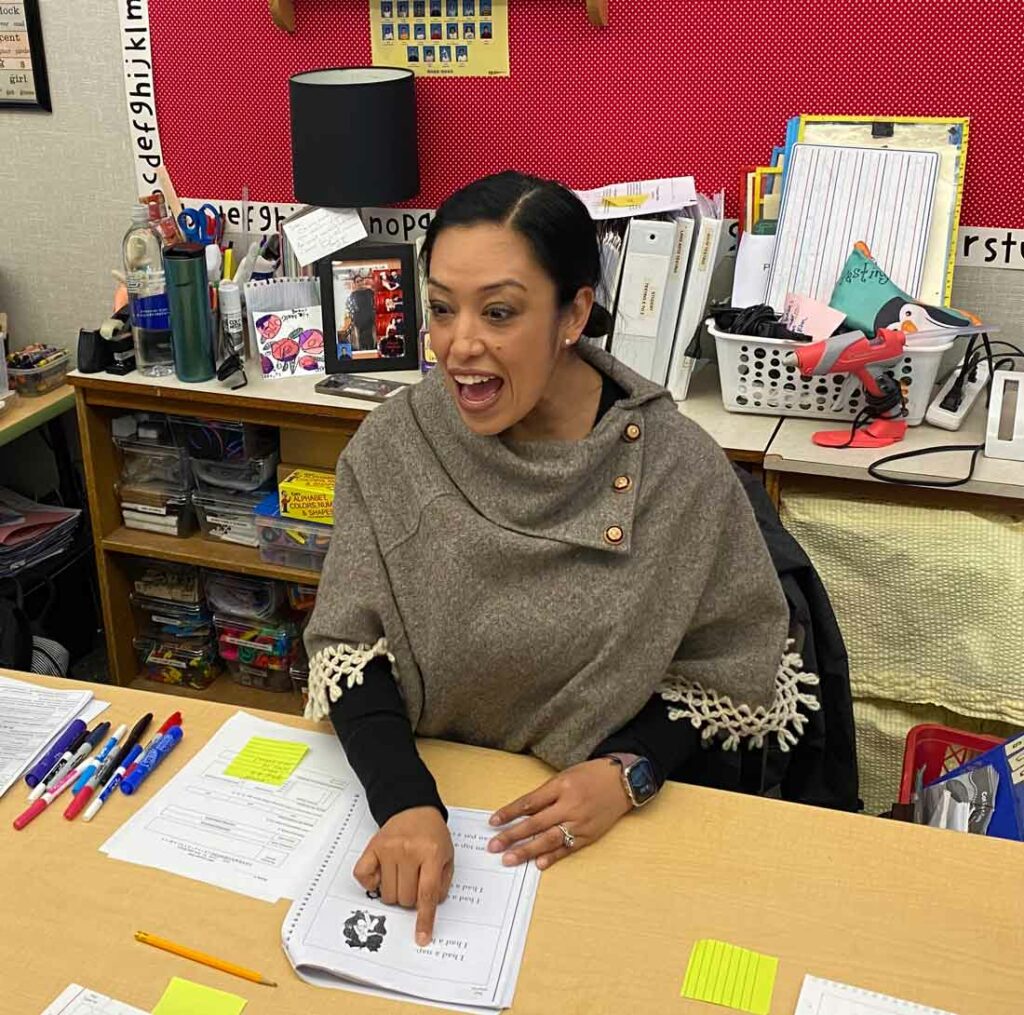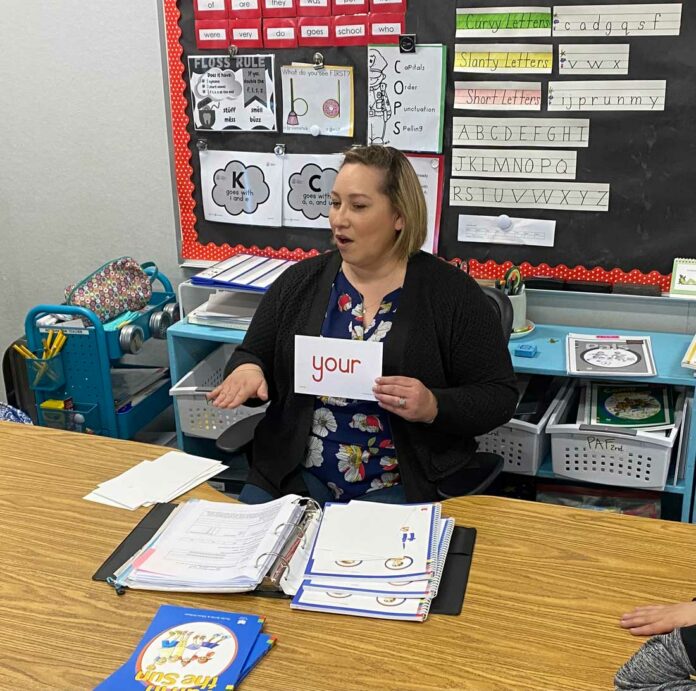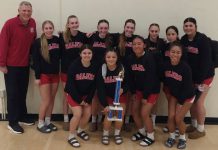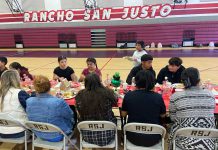With outside visitors observing R.O. Hardin Elementary School classrooms March 7, kindergarten students rotated with about half receiving small-group instruction and others using a computer-aided literacy program.
“Is … it … your … birthday?” one instructor pronounced to three students while having them read along with her prompts.
The instructor went on: “The … puppy … licked … my … hand.”
At a nearby table, another instructor teaching syllables enunciated “Ba-na-na.”
“How many is that?” she asked, to which students responded together with, “Three!”
Educators from throughout the state—and as far as Oregon—visited R.O. Hardin on this day to learn about the school’s groundbreaking early literacy program involving partnerships with Seaside-based Chartwell School and the University of California at San Francisco Dyslexia Center.
R.O. Hardin revamped its early literacy approach about five years ago after applying for a grant to help fund the Chartwell partnership. Like at many other schools, its educators had faced immense challenges in this area and were seeking alternative solutions.
Principal Lilia Espinoza explained to the crowd of about 30 visiting educators how the partnership with Chartwell School had been recommended to help develop R.O. Hardin’s early literacy curriculum—which now focuses on small-group instruction using the Chartwell model, the Preventing Academic Failure reading program and ongoing neuroscience analysis from the UCSF Dyslexia Center.
Progress levels have been remarkable, according to R.O. Hardin and Hollister School District leaders. This is a big reason why so many outside educators—hungry for solutions to the early literacy challenge—came to observe R.O. Hardin’s classrooms in the event organized by Chartwell School.
Espinoza mentioned, for instance, that 69% of kindergarten students were below grade level with literacy before the school year, 25% were within and 6% were performing above grade level. Now, 8% are below, 77% are within and 15% are above grade level.
“That is a huge piece for us to see we’re moving in the right direction,” she said to the visitors.
Espinoza and district administrators, including Superintendent Erika Sanchez and Director of Educational Services Colleen Myers, spoke to the visiting educators—and others from Chartwell and UCSF—before breaking into small groups to observe classrooms.
Sanchez acknowledged inherent challenges for schools while pointing to the pandemic, a lack of staffing and the tendency for funding to come and go. She said those realities aren’t lost on educators, but it’s also appropriate to celebrate partnerships like those with Chartwell, UCSF and the San Benito County Office of Education.
“Students deserve the right to read,” she proclaimed.
That mantra has motivated the district. Although funding challenges have reduced the number of intervention teachers, the district has been largely reliant on consistent training for teams of instructional aides who allow for more individualized teaching in small groups.
Myers recalled how R.O. Hardin and some other schools—including Cerra Vista and Sunnyslope schools—had started this approach to literacy shortly before the pandemic hit. That meant they were in a position to continue with the early literacy programming while other schools had to hold off to a degree. Once students returned from distance learning, a more robust implementation took place at the elementary level. By next year, the district expects full implementation of staffing and intervention models at all schools, possibly even for middle school grades.
“Before and after Covid, there was this urgency about teaching literacy,” Myers said. “Why are we having third-graders who can’t read? It’s just been building in the background. Finally, we’ve got the momentum.”
That momentum was on full display for the outside observers on March 7 who were in awe of the school’s success. This wasn’t the first visit from outside observers to see R.O. Hardin’s literacy program at work, and representatives from the Sacramento Office of Education are set for an upcoming observation day as well.
Bob Wise is a Chartwell board member who was among the visitors March 7. Wise, a former congressman and governor of West Virginia, said he has been watching Hollister’s progress for about three years.
“This is the proof point,” Wise said. “What Hollister is doing is taking the latest neuroscience, the latest teacher training, and implementing it. This is what cuts through a lot of discussion of what’s good policy.”
Neuroscience is the other part of the equation and where UCSF steps in by providing applied science to help improve instruction.
“I was struck by the quality of the instruction,” said Steve Carnavale from the UCSF Dyslexia Center after seeing the results in person.
After observing R.O. Hardin classrooms, visiting educators attended an additional discussion about neuroscience at the district office.
“They are studying young minds at an unparalleled level,” Myers said of the UCSF team. “They are literally measuring the activity and development of brains.”
She explained such work helps to determine areas of the brain that are more or less active. This makes it easier for teachers to identify sources of students’ literacy deficiencies, and whether they are rooted in physiological or behavioral causes.
Myers explained as of January of this year, due to a change in state law, the district had to start deploying a dyslexia screener in an attempt to identify students with the disorder as early as possible and address this and other literacy challenges sooner than later. This also will help to further authenticate identification of special needs students who can be misidentified as such when other causes may be involved.
Among those sold on the model is Nikki Bell, R.O. Hardin’s intervention teacher. After finishing a small-group session with a handful of active students, she noted how she has taught for nearly three decades—the last four as a Chartwell-trained intervention teacher.
“I kick myself for the 20-something years I didn’t use this,” she told the visitors.











